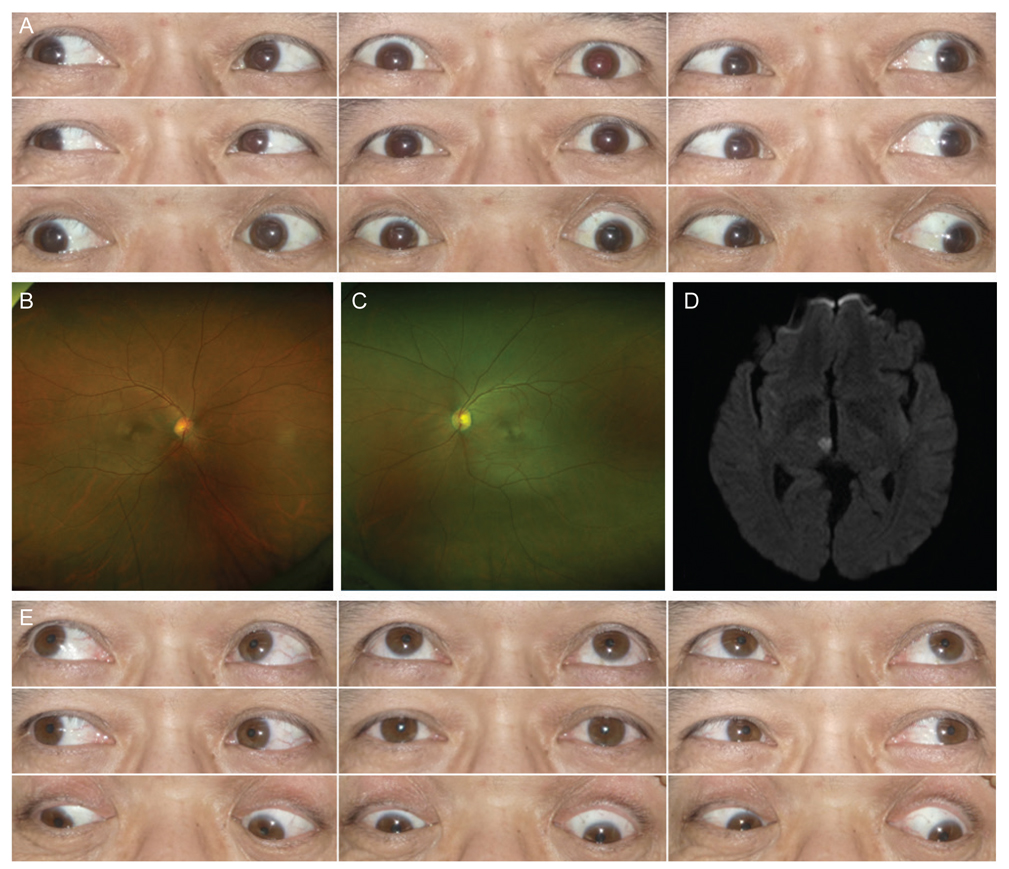Korean J Ophthalmol.
2018 Apr;32(2):154-156. 10.3341/kjo.2017.0065.
Bilateral Vertical Gaze Palsy after Cerebral Digital Subtraction Angiography Due to Unilateral Midbrain Infarction
- Affiliations
-
- 1Department of Neurosurgery, Yeungnam University College of Medicine, Daegu, Korea.
- 2Department of Ophthalmology, Yeungnam University College of Medicine, Daegu, Korea. eyekwj@ynu.ac.kr
- KMID: 2408956
- DOI: http://doi.org/10.3341/kjo.2017.0065
Abstract
- No abstract available.
Figure
Reference
-
1. Kaufmann TJ, Huston J 3rd, Mandrekar JN, et al. Complications of diagnostic cerebral angiography: evaluation of 19,826 consecutive patients. Radiology. 2007; 243:812–819.2. Choudhri O, Schoen M, Mantha A, et al. Increased risk for complications following diagnostic cerebral angiography in older patients: trends from the nationwide inpatient sample (1999–2009). J Clin Neurosci. 2016; 32:109–114.
Article3. Miller NR, Subramanian PS, Patel VR, editors. Walsh and Hoyt's clinical neuro-ophthalmology: the essentials. 3rd ed. Philadelphia: Wolters Kluwer;2016. p. 310–340.4. Bhidayasiri R, Plant GT, Leigh RJ. A hypothetical scheme for the brainstem control of vertical gaze. Neurology. 2000; 54:1985–1993.
Article5. Pothalil D, Gille M. Conjugate downward and upward vertical gaze palsy due to unilateral rostral midbrain infarction. J Neurol. 2012; 259:779–782.
Article
- Full Text Links
- Actions
-
Cited
- CITED
-
- Close
- Share
- Similar articles
-
- Vertical One-and-a-Half Syndrome Accompanying Contralateral Abduction and Incomplete Depression Palsy Due to Thalamo-Mesencephalic Infarction
- Conjugate Vertical Gaze Palsy Related to Unilateral Midbrain Infarction
- A Case of Bilateral Upgaze Palsy associated with Unilateral Midbrain Hemorrhage in Moyamoya Disease
- Multimodal Imaging Follow-up of a Thrombosed Developmental Venous Anomaly: CT, CT Angiography and Digital Subtraction Angiography
- Four Cases of Paramedian Thalamopeduncular Artery Infarction


